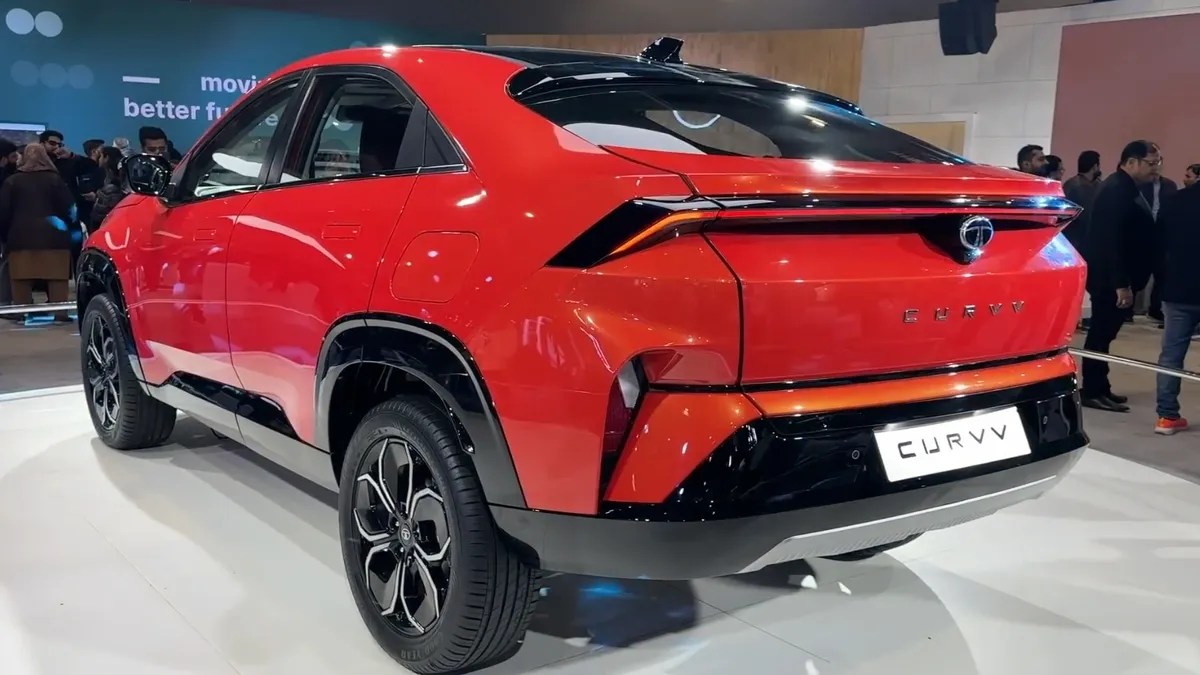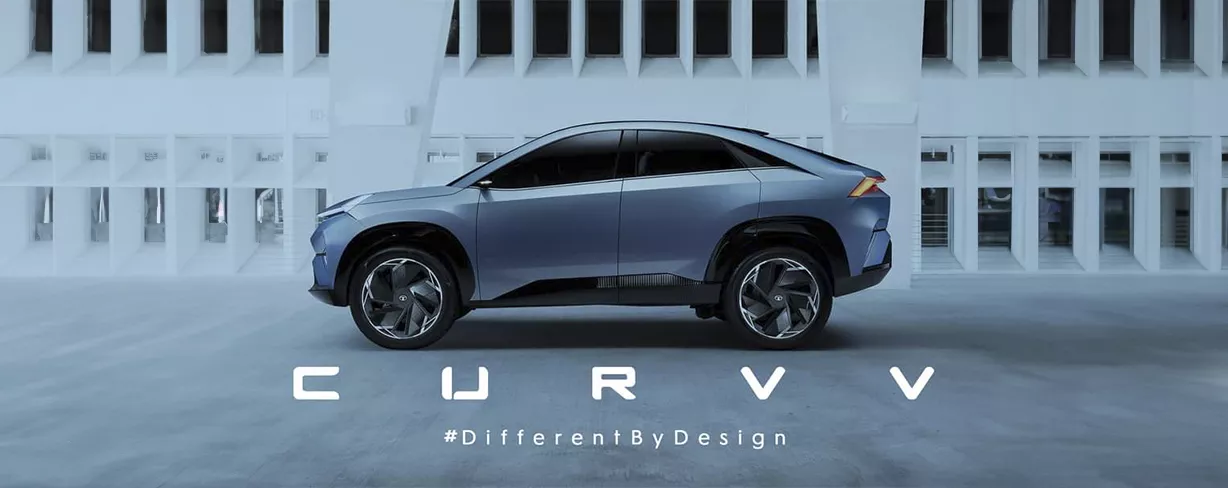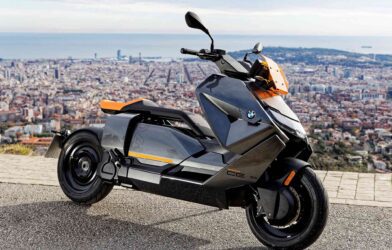An Overview of the Latest Automotive Industry Trend
Tata Curvv is the next big thing and new segment altogether in the Automotive Industry. The present-day automotive industry is affected by innovative ideas and is ready to transform and evolve rapidly. Current ecological, social, and technological trends encourage automotive manufacturers to offer consumers much more than a metal box on four wheels. For the past 100 years, carmakers have been largely focused on enhancing manufacturing to become more efficient at scale. Still, the future is about redefining the role of the vehicle – now it’s rather a smartphone or computer on wheels.
New technology in the automotive industry opens up new opportunities. AI, additive manufacturing, the Internet of Things, and 5G have become sources of product innovation and manufacturing efficiency, which has led to revolutionary changes in customer experience.
Introduction
Tata is always a trendsetter in the automotive market. Once again, it’s making headlines with the launch of its upcoming car, the Tata Curve, set to debut on August 7. The all-new Curve is not just a midsize SUV, it’s an SUV coupe that’s breaking the mold. With four powertrain options, petrol, electric, and CNG, Tata is redefining customer choices and challenging competitor brands. The Curve’s exterior is not just sleek, it’s futuristic, setting it apart from the rest. Let’s delve into this innovative design.
Tata Curvv: Exterior and Interior Design
The Tata Curvv boasts a distinctive and futuristic design reminiscent of a modernized Nexon. It features a sloping roofline for a coupe-like look, a new split-LED headlamp setup, and glossy black cladding on the sides. At the rear, a split tail-lamp design adds to its sporty appearance.
Inside, the Curvv borrows elements from the Harrier and Safari models. It includes a four-spoke steering wheel and two 10.25-inch screens for the instrument cluster and digital dials. Expected features include a wireless charger, ventilated seats, and a panoramic sunroof.
The Curve comes with a coupe SUV design language. The front of the car gets LED DRLs that run across the width till the ORVMs. The EV Curvv doesn’t have a grille, while the ICE version has a chequered grille design. Both concepts come with a sharp design language with many cuts and creases. At the rear, we see inverted L-shaped LED taillamps running through the entire tailgate width.
In the interiors, the Curve follows a simple but practical approach. It gets a simple dashboard with a floating infotainment system in the middle. Other interior highlights include a two-spoke steering wheel and digital instrument cluster. On the steering wheel, we have media controls and an illuminated Tata logo like the newly launched Nexon. Like the Nexon, we have touch-sensitive HVAC controls. Other features on the Curve include a panoramic sunroof and a powered tailgate.
Tata Curvv: Powertrain Options


The Tata Curve will debut as an electric vehicle (EV) using Tata’s Gen 2 EV technology. It is expected to offer a range of 450-500 km on a full charge. Detailed specifications for the EV version are still pending.
The internal combustion engine (ICE) version will follow. The petrol variant will have a 1.2-liter turbo engine with three cylinders, producing 125hp. The diesel variant will likely feature a 1.5-liter four-cylinder engine, similar to the Nexon. At the same time, the CNG option will also be available.
Tata Curvv: Expected Price
The EV version of the Curve is expected to launch at a price tag of Rs 20 lakh, closely competing with cars like the Hyundai Creta EV and the MG ZS EV. On the other hand, the ICE version will likely be launched at between Rs 10 and 11 lakh, which will give great competition to cars like the Kia Seltos and Hyundai Creta.
Tata Curvv: Pricing and Confirmed Features
As of its launch on August 7, 2024, the Tata Curvv has officially debuted, making waves in the midsize SUV segment.
Confirmed Features
The Tata Curvv boasts advanced features that distinguish it from competitors. The EV variant offers two battery packs: a 55 kWh pack and a smaller 45 kWh pack. The larger battery provides over 400 km of range under real-world conditions, minimizing the need for frequent charging. Additionally, the Curvv EV features vehicle-to-vehicle charging—a first in its class.
The ICE (Internal Combustion Engine) version includes the new “Hyperion” petrol engine and a diesel option, both paired with automatic transmission. It also offers off-road capabilities, with a water-wading depth of 450 mm, all-wheel disc brakes, and a six-way power-adjustable driver’s seat.
Inside, the Curvv emphasizes luxury. It features ventilated front seats, customizable mood lighting, and a 10.23-inch driver display with navigation and blind-spot monitoring. The nine-speaker JBL sound system enhances the infotainment experience, catering to audiophiles.
Updated Pricing
The Tata Curvv EV variant starts at Rs 17.49 lakh, positioning it competitively against the Hyundai Creta EV and MG ZS EV. The petrol variants are expected to start from Rs 10.5 lakh, offering strong value against rivals like the Kia Seltos and Hyundai Creta.
These features and pricing details make the Tata Curvv a formidable contender in the midsize SUV segment, appealing to both traditional and electric vehicle buyers.
What is Expected from the Curve?


The EV version of the Curve is expected to be around Rs 20 lakh, competing with the Hyundai Creta EV and MG ZS EV. The ICE versions are anticipated to range from Rs 10 to 11 lakh, competing with models like the Kia Seltos and Hyundai Creta.
The Tata Curve, with its unique design and advanced features, is not just another car. It’s a game-changer. Anticipated to attract a broad audience, including EV enthusiasts and SUV lovers, the Curve’s futuristic appeal and Tata’s reputation are expected to make a significant impact on the market. It’s a reason to be hopeful about the future of the automotive industry.
Comparison with Nexon
The Tata Curve is based on the Nexon platform but is slightly larger. It is 313mm longer, with a 62mm longer wheelbase, providing more legroom. However, the sloping roofline might reduce headroom in the rear. The increased length also results in 118 liters of additional boot space compared to the Nexon.
Competition and Pricing
The Tata Curve will have no direct competitors at launch. It will be an alternative to midsize SUVs like the Hyundai Creta, Kia Seltos, Maruti Grand Vitara, Honda Elevate, Toyota Hyryder, Skoda Kushaq, and Volkswagen Taigun. The Curvv EV will compete with upcoming models like the Hyundai Creta EV and Maruti eVX.
Prices for the Tata Curvv EV and standard versions will be announced on August 7, 2024. The EV is expected to be priced around Rs 20 lakh, positioning it between the Nexon EV and the upcoming Harrier EV. The petrol versions may start from Rs 10 lakh-11 lakh.
The Rise of Mass Production: Curvv SUV and the Model T?


The early 20th century saw the mass production of automobiles, making them accessible to the general public. It revolutionized the industry with the introduction of assembly line production. The Model T, launched in 1908, became the first affordable automobile for the average American.
- Impact on Society: The Model T’s affordability and mass production led to widespread car ownership, transforming transportation and daily life
Technological Advancements: From Safety to Comfort
Over the decades, numerous technological advancements have enhanced the automobile’s performance, safety, and comfort.
- Safety Innovations: Seat belts, airbags, anti-lock braking systems (ABS), and electronic stability control (ESC) have significantly improved vehicle safety.
- Comfort Features: Air conditioning, power steering, and advanced infotainment systems have made driving more enjoyable and convenient.
- Performance Enhancements: Turbocharging, fuel injection, and advanced transmission systems have improved engine performance and fuel efficiency.
What Features Will the Tata Curvv Get?
The latest information about the Tata Curve is nothing short of impressive. It features the four-spoke steering from Harrier (with tweaks), a 12.3-inch touchscreen infotainment system, and a fully digital driver’s display. But that’s not all. It will also offer a segment-first powered tailgate with a gesture function, a panoramic sunroof, a reclining rear seat, ventilated front seats, and more. The top-spec variants will even get ADAS Level 2 safety tech. These advanced features are sure to leave you wanting more.
Will the Tata Curve Be Bigger Than the Nexon?
The Tata Curve is based on the Nexon but will be slightly larger than the compact SUV. Regarding dimensions, the Curve will be 313mm longer than the Nexon, with a 62mm longer wheelbase. This means it should offer better legroom over the Nexon; however, the sloping roofline will result in lower headroom at the back. The added length gives it 118 liters of extra boot space over Nexon (382 liters).
Which Cars and SUVs Will the Tata Curvv Rival?
The Tata Curve will have no direct rivals upon launch. It will be an alternative to midsize SUVs such as the Hyundai Creta, Kia Seltos, Maruti Grand Vitara, Honda Elevate, Toyota Hyryder, Skoda Kushaq, and Volkswagen Taigun. It will soon be joined by the upcoming Citroen Basalt coupe-SUV in the segment. The Curvv EV will compete against the forthcoming Hyundai Creta EV and Maruti eVX.
How Much Will the Tata Curvv and Curvv EV Cost?
Prices for the Tata Curvv EV and the standard Curve will be revealed on August 7, 2024. While the EV is expected to be priced from around Rs 20 lakh – positioning it right in the middle of the Nexon EV and upcoming Harrier EV – the petrol versions could be priced from Rs 10 lakh-11 lakh onwards
The Impact of Connectivity: Smart and Connected Cars
Modern automobiles are increasingly becoming connected, integrating with digital ecosystems to offer enhanced features and services.
- In-Car Connectivity: Features like Apple CarPlay, Android Auto, and in-car Wi-Fi provide drivers and passengers with seamless connectivity and entertainment options.
- Vehicle-to-Everything (V2X) Communication: This technology enables vehicles to communicate with each other and infrastructure, improving safety and traffic management.
- Data and Privacy: As cars become more connected, data privacy and cybersecurity concerns have emerged, necessitating robust safeguards.
Environmental Impact: Moving Towards Sustainability
The automobile industry significantly impacts the environment, prompting efforts to reduce emissions and promote sustainability.
- Emission Standards: Governments worldwide have implemented stringent emission standards to reduce the environmental impact of vehicles.
- Alternative Fuels: Besides electricity, alternative fuels like hydrogen and biofuels are being explored as sustainable vehicle power options.
- Circular Economy: Automakers are adopting circular economy principles, focusing on recycling and reusing materials to minimize waste.
Conclusion
The evolution of the automobile is a testament to human ingenuity and innovation. From the early horseless carriages to today’s electric and autonomous vehicles, the automobile industry has continually adapted to meet the changing needs of society. As we look to the future, the focus on sustainability, connectivity, and advanced technologies promises to drive further transformation, making transportation safer, more efficient, and environmentally friendly. Embracing these changes will ensure that the automobile remains a vital part of our lives for generations to come.
Meta Line
Designed to offer the highest level of safety performance, employing state-of-the-art technologies and guaranteeing total vehicle protection.






